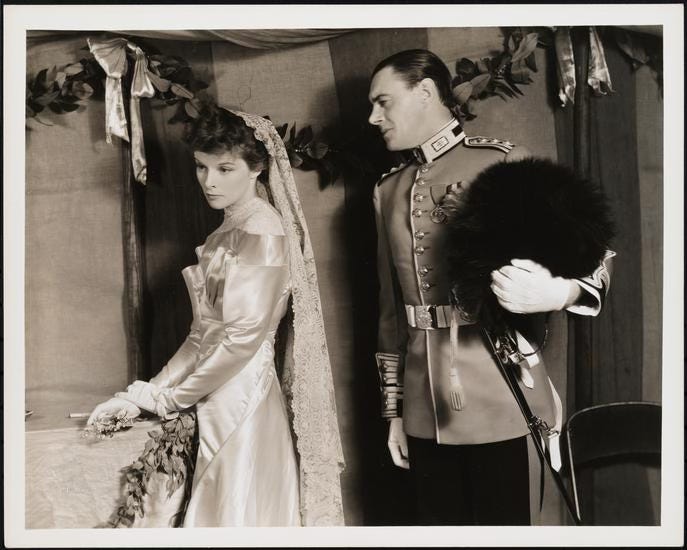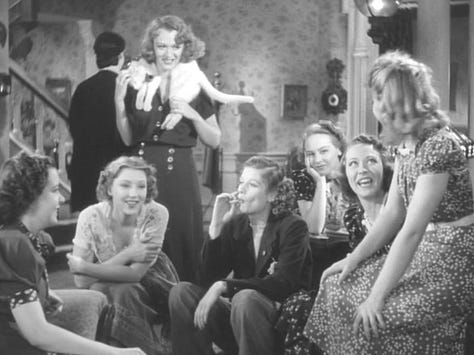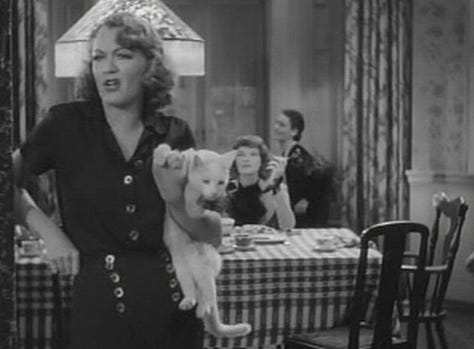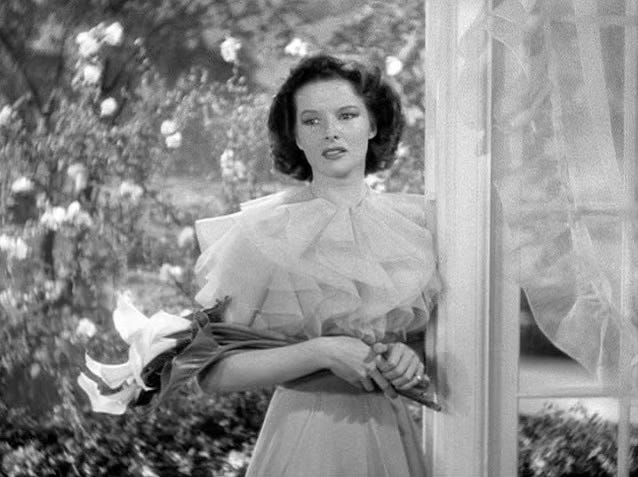now, about those calla lilies
[a detective story]
[originally published March 21, 2025]
Before I forget (as if, and if you haven’t already seen it, and even if you already have):
Last week’s cultural blip about The New Yorker’s mildly updated copyeditorial style netted me not only a guest spot in a front-page New York Times article but a follow-up Times Quote of the Day cameo, which I thought was pretty dang exciting.
Herewith:
Beyond that, I also recently scratched a little historical textual itch, which perhaps you’ll find amusing.
Herewith:
If you’ve ever seen the splendidly fast-talking 1937 film Stage Door, directed by Gregory La Cava from a screenplay by Morrie Ryskind and Anthony Veiller, based on the play of, as they say over t’Wikipedia, the same name by Edna Ferber and George S. Kaufman,1 you’ve no doubt taken note of Katharine Hepburn’s speech in the play2 within the film that begins:
The calla lilies are in bloom again. Such a strange flower. Suitable to any occasion. I carried them on my wedding day, and now I place them here in memory of something that has died.
You may recall that Hepburn’s neophyte actress character, Terry Randall, finds herself cast in the lead in the play within the film owing to the clandestine financial shenanigans of her wheat magnate father, who hopes she’ll fail and come to her respectably upper-crust senses, and though Terry starts out direly wooden (and also willful and tactless in a way that evokes what we’re often told was Hepburn’s actual manner in her early stage career) in rehearsals, she miraculously comes into her own on opening night, thanks to the inspiringly helpful suicide of one of her co-residents in the theatrical boarding house in which much of the film (and all of the original Ferber and Kaufman play, to which the film bears only, beyond its premise, occasional resemblance) takes place.3
Anyway . . .
The legendary story that follows the film’s calla lilies speech around like a faithful dog (it’s repeated in some detail in at least one major biography of Hepburn, and it’s the entire premise of a Paris Review article I stumbled upon in researching today’s piece) is that it was lifted, as a kind of rueful in-joke, from a play titled The Lake, in which Hepburn had appeared, unhappily, in 1933–344 and which is notorious for having inspired Dorothy Parker’s gimlet (and I don’t mean the cocktail, but who knows with Mrs. Parker) remark about Hepburn’s acting “run[ning] the gamut of human emotion from A to B.”5

I thought it might be interesting to read The Lake to (a) see if it’s as dreadful as it’s cracked up to be, and (b) experience the ur-version of the calla lilies speech in, as it were, situ, so I located a copy of the published script for not too much money, and guess what:
The speech isn’t there. Not even in part, not even vaguely. No calla or any other sort of lilies, not on the wedding day of Hepburn’s character, Stella Surrege, or afterward. Calla-lilies-wise: Bupkis.
Also, The Lake is indeed a dreadful play—perfectly dreadful, even—in which the characters don’t speak so much as meander their way through frequently incomprehensible little reveries punctuated by lots and lots of ellipses—I think it thinks it’s Chekhovian to do so—and you can perhaps sympathize with Hepburn’s paying off The Lake’s fiendish producer, Jed Harris,6 to close the show rather than drag it around on a national tour in the hope of squeezing a few post-Broadway profits out of it (and out of Kate).

But as to those portable calla lilies, I guess there’s a reason that legendary stories, at least some of them, are called legendary.
Post-publication revelation: It belatedly occurred to me (I suppose I should have thought of this earlier) to take a stroll through Hepburn’s 1991 memoir, Me, to see if Kate the Great herself had anything to say on the subject, and, lo, what do I find, amid her recollections of The Lake, but her explicitly attributing the calla lilies speech to it, though she misquotes “something that has died” (at least as we hear it in Stage Door) as “someone who is dead.” I do not, I confess, quite know what to make of this, beyond noting, once again, that none of the speech—not a hint of it—is in The Lake’s published script.7 Let the mystery, or at least the muddle, live on.
Post-post-publication revelation: My fine friend Farran Smith Nehme, whom you should certainly be following here as the Self-Styled Siren, rides to the rescue with this passage from William Mann’s biography Kate:
Contrary to reports, the [calla lilies] line was not lifted from The Lake. It does not appear in any of the original scripts for the play. Rather, it is the atmosphere of the scene that Stage Door lifts from The Lake, the morose woman grieving the death of her husband. If audiences wanted to connect the play-within-the-film with Hepburn’s notorious flop, however, so much the better.
And with apologies for continuing to flog a moribund horse, but for the sake of absolute clarity: Kate’s Lake’s morose Stella concludes the play with a dead husband; Kate’s Terry’s April’s morose Jeanette is merely staring down the barrel of a failed marriage. As the latter goes on to say (ad-libbing her brains out in a fit of artistic transport):
Have you gathered here to mourn, or are you here to bring me comfort? . . . I’ve learned something about love that I never knew before. That I never knew before. You speak of love when it’s too late. Help should come to people when they need it. Why are we always so helpful to each other when it’s no longer any use? . . . This is my home. This is where I belong. Love was in this house once, and for me it will always be here, nowhere else. . . . One should always listen closely when people say goodbye, because sometimes they’re, they’re really saying farewell.
Enough. This mystery is as solved as it’s ever, I think, going to get.
As Farran reminds me, quoting (thank heaven!) a line that’s actually from an actual film: Print the legend!
So: Cut.
And indeed: Print it.
And, as they say in these old scripts, the CURTAIN DESCENDS.
Speaking of Chekhovian, I just the other day subscribed to National Theatre at Home, in at least partial part because I craved to watch the NT’s recent production of the 1938 play Dear Octopus, by Dodie Smith, whom perhaps some of you know as the author of the novel I Capture the Castle and whom perhaps most of us know, even if we don’t know that we know it, as the author of the novel The Hundred and One Dalmatians.
In any event, Dear Octopus is indeed Chekhovian (meditative, sadly funny, funnily sad, nearly plotless), and it’s also absolutely riveting, and I’m always thrilled to be exposed to one of those plays that mysteriously languish for decades in semi-obscurity and then, owing to thoughtful theater spelunkers, reappear revelatorily and fresh as daisies and/or paint.8 (This production, directed with great finesse by Emily Burns and led by the incomparable Lindsay Duncan, is everything a languishing-for-decades-in-semi-obscurity play could possibly dream of.)
There are approximately 77 other things on the current National Theatre at Home roster I’m desperate to get to next, including a production of Dion Boucicault’s London Assurance featuring Fiona Shaw and Simon Russell Beale, an Antony and Cleopatra with Ralph Fiennes and Sophie Okonedo, and Andrew Scott’s one-man Vanya (it doesn’t get much more Chekhovian than Chekhov, does it9), and perhaps you’ll want to explore this site as well. It promises much bang for one’s pound.10
The Fine Print
Thank you all for being here, and thank you, especially, to subscribers, and especially especially to paying subscribers. I quote my friend Connie Schultz: “You don’t have to pay to read my writing. I understand that not everyone can do so, and I am grateful to those of you who do because you make it possible for me to keep writing.”
Sallie is grateful too.
Also, this is installment 93, by my count, of A Word About . . ., which I launched one year ago tomorrow. Thank you for accompanying me on what I have no intention whatsoever of referring to as This Journey, and I hope you’ll continue to accompany, hang out, stick around, etc.
Kaufman quipped that the great liberties taken with his and Ferber’s play had earned the film the title “Screen Door,” which is not, as quips go, especially top-shelf, but I suppose that it was inevitable and unavoidable. (Kaufman’s best bon mot, and I’ll leave you to google your way to it, was surely “Jed, your fly is open.”) Note as well that the play is billed Ferber first, because it was, first, her idea. (For the pair’s earlier collaboration, Dinner at Eight, Kaufman took the top spot.) Note as well, as well, though we tend to think of them always as “Kaufman and Hart,” that the uproarious Hollywood satire Once in a Lifetime, whose success comprises the climax of Moss Hart’s heavily fictionalized memoir, Act One, is credited to Hart and Kaufman, as is, among others, the Pulitzer Prize–winning* You Can’t Take It with You, though The Man Who Came to Dinner (again, among others) is indeed, the originator and heavy lifter leading the way, a Kaufman and Hart collaboration. Fair is fair.
*En dash alert!
It’s called Enchanted April, which is a good trivia contest answer, though it’s unrelated to the 1922 Elizabeth von Arnim novel of, as they do persist in saying, the same name except with a The in front, and its myriad stage and film adaptations.
Post-publication footnote addendum: I’m a bit shocked, in retrospect, to realize that I’ve managed to write at passable length about Stage Door without mentioning, even in passing, Eve Arden and Constance Collier, to say nothing of Ginger Rogers, Lucille Ball, Ann Miller, and that glorious frost queen Gail Patrick, but, well, now I have managed to. In passing.



En dash alert (encore)!
The remark is often recalled as being from a published review by Mrs. Parker, but that’s not in fact the case, and if you’ve already sensed that “that’s not in fact the case” is today’s theme, good for you.
Indeed, the selfsame Jed of footnote 1. I hopefully suppose that the story of Hepburn’s surrendering the better part of her bank account to escape The Lake is true, though the citation I find online for the story cites, alas, the same book that includes the calla lilies story, so who knows.
Neither, by the way, is the alleged final line of The Lake as it’s quoted in that Paris Review article I mentioned earlier: “There are ghosts who are friendly ghosts. I shall be back.” What I do find in The Lake, a minute or two and a handful of ruminative speeches before the final curtain drops, presumably out of exhausted boredom, is:
Stella: Are you afraid of ghosts, Mother?
Mildred: Ghosts?
Stella: Yes. [Looking across to Lena] They can come to you . . . as friends . . . too, can’t they, Lena?
Mildred: No, dear . . . but I don’t think . . . you should . . .
Stella: I’ll be back in half an hour. . . .
[She goes out.]
I trust you’re taking in the . . . ellipses.
Some of you may be thinking right now (I am, it certainly seems) of Paul Osborn’s Morning’s at Seven, which failed on Broadway in 1939 and was reborn triumphantly forty years later in a gorgeous revival featuring, among others, Nancy Marchand, Teresa Wright, Maureen O’Sullivan, Elizabeth Wilson, and the astonishing David Rounds and Lois de Banzie.
At the moment I’m about halfway through a production of The Cherry Orchard starring Zoë Wanamaker, and though I’m finding the translation increasingly grisly, well, it’s still The Cherry Orchard, which might well be the greatest play ever written.
I’d already seen the NT’s queered-up, if it’s not redundant to say so, production of Noël Coward’s Present Laughter (also starring Andrew Scott, not to mention glorious Indira Varma), and it’s quite the merry, sexy romp.






Dude. Were you aware that this is one sentence?
The legendary story that follows the film’s calla lilies speech around like a faithful dog (it’s repeated in some detail in at least one reputable biography of Hepburn, and it’s the entire premise of a Paris Review article I stumbled upon in researching today’s piece) is that it was lifted, as a kind of rueful in-joke, from a play titled The Lake, in which Hepburn had appeared, unhappily, in 1933–344 and which is notorious for having inspired Dorothy Parker’s gimlet (and I don’t mean the cocktail, but who knows with Mrs. Parker) remark about Hepburn’s acting “running the gamut of human emotion from A to B.”5
It's because of William Gillette that Sherlock Holmes still wears a deerstalker and smokes a curved pipe in our imaginations.